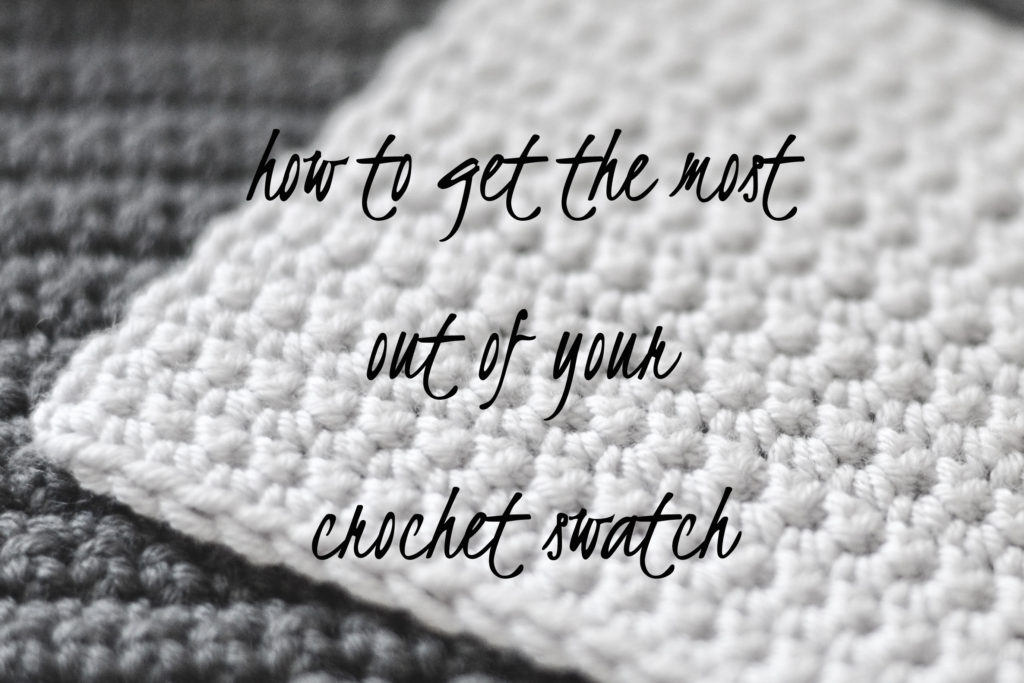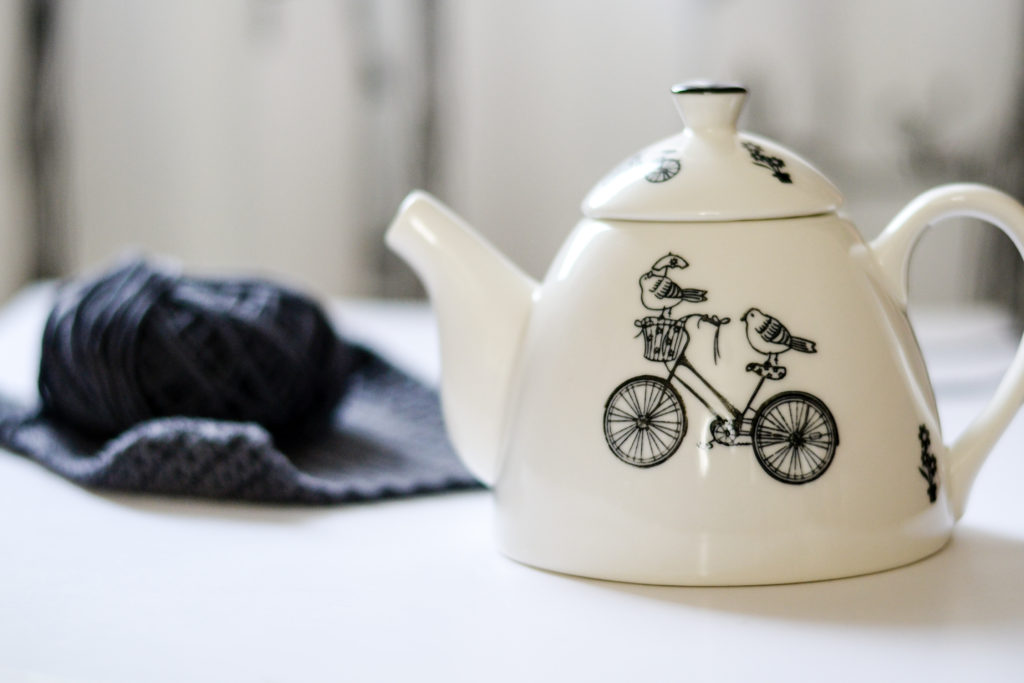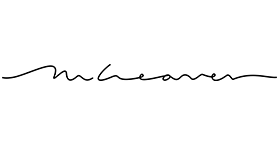“Swatches lie!” is something I hear very often, and as much as I understand the sentiment, the truth about swatches is that they don’t lie, they just don’t tell you everything. Their truth is true within the confinement of a 4″x4″ (10cmx10cm) square (or whatever the swatch size and shape happen to be), and once some other variables, such as the project size, the weight and the blocking, are introduced, this truth may no longer hold. To take this point to the extreme, the only reliable swatch of a crocheted object is … the actual crocheted object.
Should we slag swatching off as a pointless waste of time? Well, while there are many situations when it’s OK to ignore it, there are times when, as limited as its value is, swatching is not optional. Such as crocheting garments, for example. Particularly, crocheting garments from someone‘s pattern based on someone‘s gauge. Something as small as a 1/4″ (0.5cm) difference in a swatch can easily grow into a 4″ (10cm) difference in a finished sweater. Ignore swatching and you are on the road to a potential disaster, so it is worth pulling over and taking that insurance policy.
Below is my list of ways to ensure you get the most out of the limited value swatching can provide.

Make it BIG!
When it comes to swatching, size does matter and the bigger your swatch is, the more accurate it becomes and, therefore, the better it performs as an indicator of the potential outcome. If you are measuring a 4″x4″ (10cmx10cm) square, your swatch needs to be at least 6″x6″ (15cmx15cm) so you could safely measure in the middle of the square away from the edges which can distort your reading.
Use it as an opportunity to practice the stitch pattern
Unless you are very familiar with the pattern, it could be a good idea to get the hang of the stitch sequence so that your hand becomes relaxed as that can affect your gauge too. Have you ever made mittens with the second one considerably different in size to the first one?
Does it look good?
Even if your gauge is spot on, is it a good match between the yarn and stitch pattern? All that variegated yarn with short colour repeats which looks delightful in a skein will not necessarily look as you imagined once stitched up. Will it continue to look good once scaled to a full-size sweater? Will it be something you can put on and wear in public without feeling embarrassed?
Get the feel of the fabric
Do you like the drape? Is it so tight that you could leave it standing on its own? Is it so loose, you can no longer see the stitch pattern?
Block it
If you are planning on wearing your creation, chances are there will be a point when it will require a bath. The fabric (what it measures, feels and looks like) may change dramatically after it contacts water. “Do unto it what you would do to your finished object” is the mantra you may have heard and it makes complete sense. You want to know beforehand that the garment which is about to cost you so much time, effort and yarn will not come out as a scary monster out of your washing machine (if that’s where you are intending to wash it).
Weigh it down
Gravity takes just as much toll on the crocheted fabric as it does on one’s cleavage. Once you hang the sweater on a person, gravity will relentlessly pull it down thus affecting your gauge. One way to be prepared for it is to dry your swatch hanging with some weight attached. What I usually do is I first let it half-dry lying on a towel, and then, while there is still some moisture left in the fibre, I pin it to a vertical surface with some pegs attached to the bottom and then leave it to dry completely. Which brings me to the next point:
Let it dry completely
Even though it may feel dry, there may still be some moisture trapped in the fibre. Give your swatch enough time to dry and let it lie flat for an hour or so to “relax” before attacking it with a ruler.
Use a ruler
Rather than a flexible measuring tape. After it has been used for a while, the latter can become a real cheat!
Don’t be in denial
If your measurements are nowhere near the required gauge, don’t attempt to mould your swatch into the required size (ask me how I know that it doesn’t help!). Do not despair and try again with a different hook or different yarn. Think of the positives, since you did not have to crochet an entire sweater only to realise that the armholes fall below your knees.
Yet be flexible
A swatch is not the end, it’s a tool, and it is your sweater that needs to work, not your swatch. Think whether there are any possibilities of adjusting the pattern based on your gauge. Depending on the specific pattern you are working from, lengths may not be so difficult to adjust. So if you have to choose between the stitch gauge and the row gauge, go for the stitch gauge and play it by the ear with the number of rows worked.
Finally, brace yourself
Be prepared that even if you have a perfect swatch, you may still get surprises down the line, particularly if you have substituted yarn. Just because the weather forecast shows you the sun symbol, does not guarantee you don’t run a chance of getting soaked.

(This last picture bears no relevance to the topic discussed. I just thought it was pretty.)

A very interesting subject indeed… you know me well enough by now to know swatching scares me and if it can be avoided, I will stay well clear of it! Having said that, I find myself starting on projects finding quite a few rows down the line I don’t like the yarn, the drape or that I’ve simply chosen the wrong size. I have to change my perspective on this and try to make sure, especially for garments (but not only…), that I do my yarn research thorougly to make my crochet experience the most enjoyable and the least frustrating as possible. Thank you! 🙂
If it is a small project, I don’t bother swatching. But with clothing, it’s just too many things I need to make sure work well together. It’s definitely part of the “preliminary research”!
Thank you for your comment! 🙂
I am not the biggest fan of swatching but when I do swatch, I always wonder why i don’t do it for (almost) every project. Since my daughter began playing with Barbies , swatching isn’t all bad. I can always turn my swatch into a lovely skirt or blanket if I have no further use for it. One thing is for certain, swatching *has* saved me much frustration more than once by making me realize that I wasn’t as fond of the stitch, colour, drape, yarn, etc as I thought. So, as much as I would love nothing more than to dive head first into projects, swatching is usually my first dip…especially for garments.
Thanks for the useful tips Yuliya.
You are so lucky to still have Barbies in your environment!!! 😉 Joking aside, the first proper one I made (for Yuliya’s Olga top) was a life saver! So yes, we should swatch systematically, shouldn’t we? I think not doing it just boils done to sheer impatience (and a little laziness, I must admit!). 🙂
Turning swatches into Barbie outfits is a great idea! I should have included a section on “other ways to use swatches”. 🙂
Thank you for your tip, Nadia!
I’m a big fan of swatches. I make a lot of them and keep some in a box to remember what is best and what is definitely dreadful. I couldn’t agree more with your article. Swatching is not a waste of time. It is part of the learning process. It is like preparing for a big journey. It gives you confidence you are on the right track for your set destination point. And sometimes it opens up unexpected horizons. Do swatch and carefully look at your swatch. Touch it, feel it, squeeze it. Excellent article. And nice picture (even if not related to topic) 😀
So happy to see you here, Rachel! 🙂 Thank you!
I love swatching too! I am relieved I am not weird! Joking aside, I love playing with stitches and adjusting the way I want the stitch pattern to look, it’s like a game with so many outcomes.
Isn’t it just weird my crochet gourous are swatch-buffs? I’m sure my karma is trying to say something, here… 😉
“Swatch-buff” – I like that!
It was definitely meant as a compliment! 🙂
I’m desperate to make ” smocked elegance baby blanket” . However I don’t know how to ( Tps next 2 stitches tog(this will include one st from each of the2 pairs from previous row). Page 126 of the book unexpected Afghans,by Robyn Chachula
Unfortunately, I am not familiar with this pattern and don’t have this book. The best thing to do would be to contact the designer. Here is a link to Robyn’s Ravelry account: http://www.ravelry.com/people/crochetbyfaye. She also has a blog: http://crochetbyfaye.blogspot.co.uk/